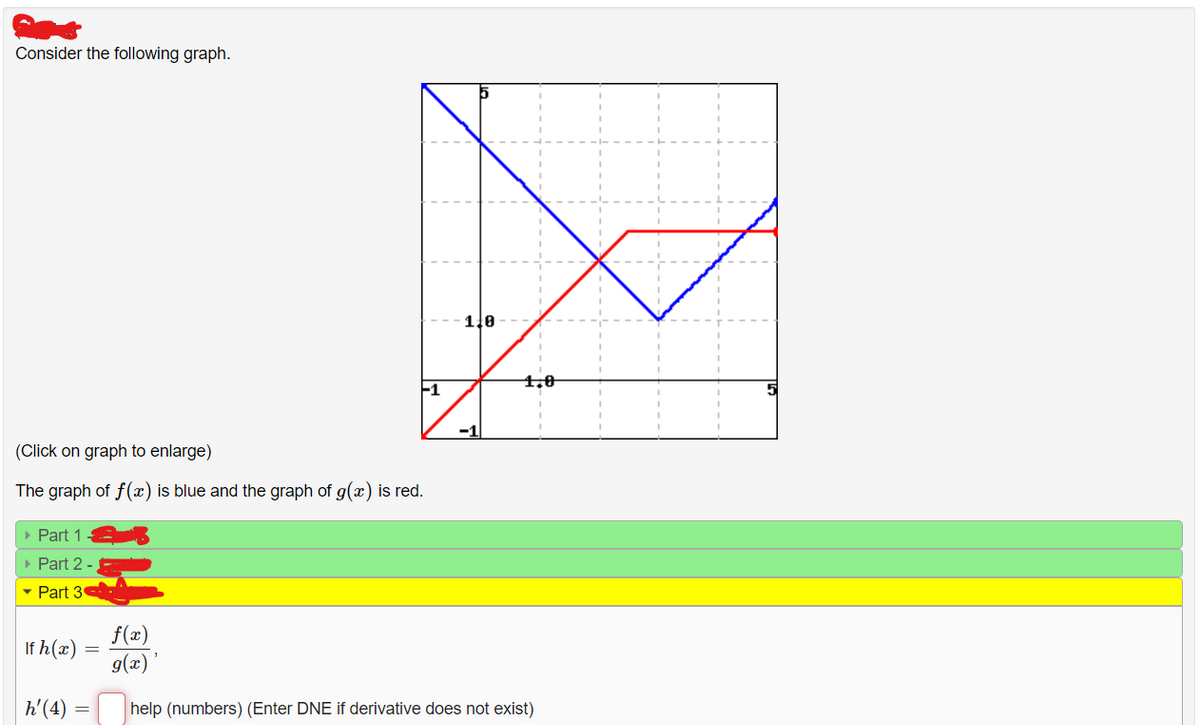Consider the following graph. (Click on graph to enlarge) The graph of f(x) is blue and the graph of g(x) is red. ▸ Part 1 ▸ Part 2 - ▾ Part 3 If h(x) = -1 h'(4) = -140 -1 f(x) g(x)' help (numbers) (Enter DNE if derivative does not exist)
Consider the following graph. (Click on graph to enlarge) The graph of f(x) is blue and the graph of g(x) is red. ▸ Part 1 ▸ Part 2 - ▾ Part 3 If h(x) = -1 h'(4) = -140 -1 f(x) g(x)' help (numbers) (Enter DNE if derivative does not exist)
Functions and Change: A Modeling Approach to College Algebra (MindTap Course List)
6th Edition
ISBN:9781337111348
Author:Bruce Crauder, Benny Evans, Alan Noell
Publisher:Bruce Crauder, Benny Evans, Alan Noell
Chapter1: Functions
Section1.2: Functions Given By Tables
Problem 32SBE: Does a Limiting Value Occur? A rocket ship is flying away from Earth at a constant velocity, and it...
Related questions
Question

Transcribed Image Text:Consider the following graph.
(Click on graph to enlarge)
The graph of f(x) is blue and the graph of g(x) is red.
▸ Part 1
▸ Part 2 -
▾ Part 3
If h(x)
h'(4)
-1
=
140
-1
f(x)
g(x)'
help (numbers) (Enter DNE if derivative does not exist)
Expert Solution
This question has been solved!
Explore an expertly crafted, step-by-step solution for a thorough understanding of key concepts.
Step by step
Solved in 2 steps with 4 images

Recommended textbooks for you

Functions and Change: A Modeling Approach to Coll…
Algebra
ISBN:
9781337111348
Author:
Bruce Crauder, Benny Evans, Alan Noell
Publisher:
Cengage Learning

Functions and Change: A Modeling Approach to Coll…
Algebra
ISBN:
9781337111348
Author:
Bruce Crauder, Benny Evans, Alan Noell
Publisher:
Cengage Learning